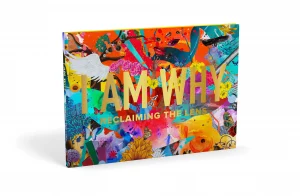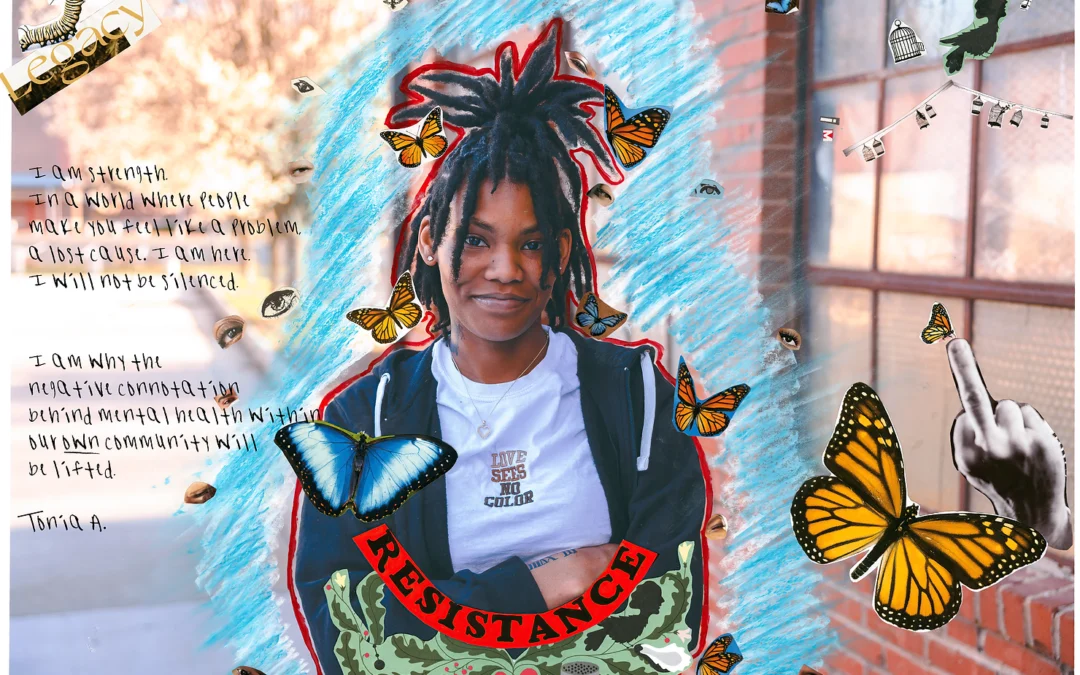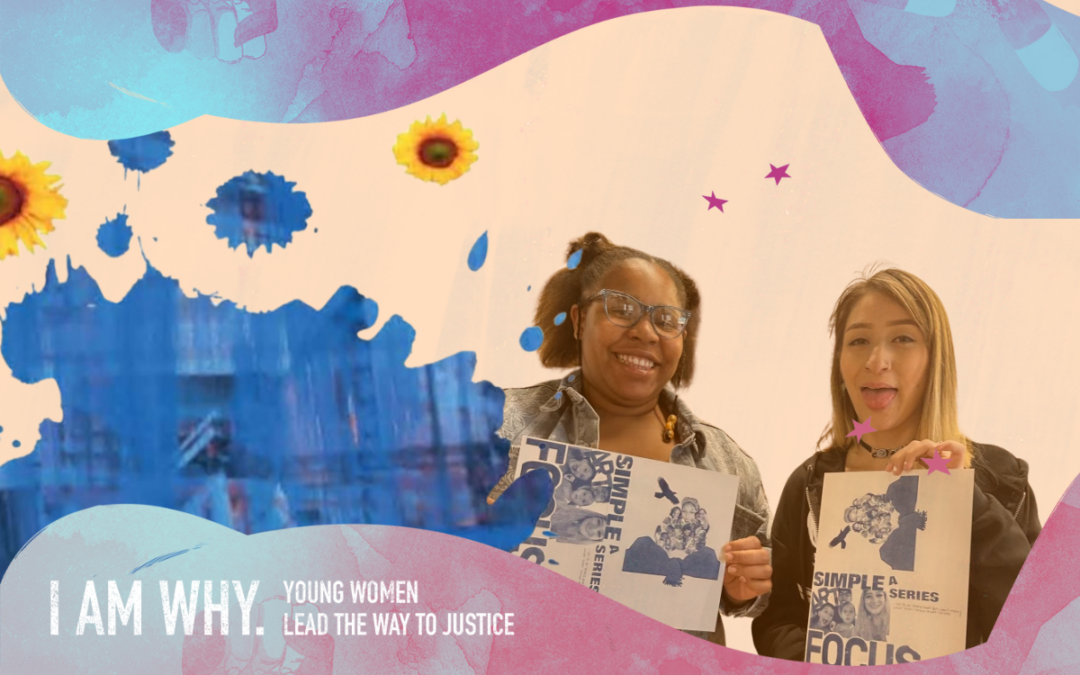In September 2023, I Am Why’s Self-Advocacy pod held a listening session to hear from consultants from all across the nation about our hot topic for the month: “What does self-advocacy look like for a Black or Brown person in the U.S.?”
Our Self-Advocacy pod believes in the importance of our internal voices being at the forefront of the work and how pivotal they are to our overall well-being. This is why we as a team decided to focus on this topic. During the listening session, four questions guided the discussion. The results are below.
*Our feedback is reflected of our conversations with women, gender-expansive people and communities of color.
Why is it important for Black and Brown people to exercise self-advocacy?
Capacity building
-
-
- We have to allow space for people to share their lived experiences uninterrupted.
- We need to create spaces that are not limiting, but restorative and validating.
-
System change
-
-
- Communities of color need to work together to cultivate sustaining change that cannot be easily undone.
- We should be honest about our current state and what we need to support and progress within our communities.
-
Self-determination
It is important for people to individually have self-determination to aid in liberating our communities.
-
-
-
- Through this, we are able to self-advocate.
-
-
Challenges that prevent Black and
Brown people from exercising self-advocacy
There is a consistent threat of progressive movements forming or revolutionary ideas created which causes a massive scale of support but then the result from that is communities of color settling.
-
-
-
- We have been satisfied with “peanuts” and “band-aid” solutions by settling for less-than-deserved.
-
-
Progress cannot be forced, it must be natural. This means a true change to support a community must come from within that community.
-
-
-
- Self-empowerment is the base for self-advocacy.
-
-
Specific examples
The Black Agenda
What examples do you see of Black and Brown people self-advocating?
Specific examples
Protests
-
-
- Going to government offices.
-
Fellowship: Future Economy Lab
Grantmakers for Girls of Color and SecondMuse
-
-
-
- Abundantly investing in the future.
-
-
Indigenous dances
-
-
- When Native American people dance and practice their beliefs, you know and feel that they know what they are moving for and standing for.
-
Black student unions
There are times that Black people are forced to prioritize inclusivity over the Black experience.
-
-
-
- We stop allowing people who do not identify as Black in the organization.
- “When it is something for Black people, we include everyone. That is not sticking to self-advocacy.”
- Creating allyship that exists outside the main group is a possible solution.
-
-
Share resources to youth and organizations outside I Am Why.
Representation
-
-
-
- Uplifting to see other Black and Brown people sharing information with their communities and like-minded individuals.
-
-
Alternative examples
-
-
- There is no need to limit ourselves to traditional forms of advocacy.
- Social media blackout and utilization of community-building and support tactics on social media
-
What solutions can we gather from Black and Brown-led self-advocacy?
Restorative practices
Encouragement and empowerment
-
-
-
- People who are empowered can take the initiative to create change in various ways.
- Not waiting for the government to regulate or do its job when members of our community are suffering.
- People who are empowered can take the initiative to create change in various ways.
-
-
Diversity and intersectionality
Building relationships with other cultures and not appropriating other cultures.
-
-
-
- Learning from each other’s struggles and history.
- Practicing cultural competency and celebrating cultures.
-
-
Investment in communities and individuals
Creating a structure that can allow communities to be self-sustaining.
-
-
- Increasing economic mobility.
- Increasing quality of life and decreasing cost of living.
- Increasing mental health outcomes and overall outlook.
- Increasing positive housing, health and wellness outcomes.
-
Redirecting funding to areas that can directly support our communities.
-
-
- Redirect funding from the police departments to social services agencies
-
How can non-Black and Brown people support self-advocacy? (Allyship)
Defining what Allyship is
-
-
- An Ally is a person who might not fully understand the lived experiences of Black and Brown people, but they can be empathic and show respect to who they are.
- Allies fight alongside people and stand in solidarity no matter what.
- The morals of Allies are not rooted in racism but are based on inclusivity and liberation.
-
What can Allies do to support Black and Brown people
Get educated on Black and Brown experiences.
-
-
- Not using implicit bias to understand People of Color and not utilizing a generalized means to engage with People of Color.
-
Help to build capacity and pathways for Black and Brown people to thrive.
Create opportunities to connect communities to others with different types of power to uplift recommendations:
-
-
-
- Legislative power
- Economic power
- People power
- Government power
- Local, state and national power
-
-
Collaboratively work with people with lived experience by thinking critically and strategically to create long-term beneficial changes.
-
-
-
- Be a co-conspirator in the movement.
- Use your authority and power to help support.
-
-
Respect the storytelling of Black and Brown experiences.
Stop making oppression trendy.
-
-
-
- Tokenization and inviting advocates to the table to evoke a sense of progress.
- Profiting off of Black and Brown trauma.
-
-
Taking time to sit down and listen to stories and not having a reputable for everything that is said.
Respect is:
-
-
-
- Be mindful of who is in the room and who is sharing their stories.
- Be comfortable with sharing your story.
-
-
The aftermath from this listening session brought us to the conclusion that Black and Brown people need a resource that can be used to guide and protect us while navigating systems within the United States, and that members of our pod will be the ones to design it. This officially became the catalyst for us to create a toolkit for self-advocacy!
The inspiration and purpose of the toolkit come from our passion for change by leading the way to justice. When we think of the future of this kit, we think of it like the Yellow Pages for advocacy, a resource for the people. As I Am Why continues to invoke change by creating a safe space for women and gender-expansive People of Color, we, members of the Self-Advocacy pod, want to contribute to the movement by developing and designing resources for our communities. We want to craft a resource for People of Color, allies and like-minded people to be able to join in on systemic change conversations to restore, build and liberate communities and ourselves.
The vision is to use this toolkit to open up pathways of engagement through the lens of self-advocacy. The hope is that once people use this tool, they will feel empowered to share and will inspire others to utilize the same resource.
In this toolkit, there will be a roadmap for advocates to utilize to assist them on their self-advocacy journey and help them navigate systems. The kit will include resources and information on:
- Strategic sharing
- Knowing your rights
- Self-advocacy journey materials
- Intellectual property
- Policy vs. practice
- Implementation sciences
- System change strategies
- And more!
Our prime target audience for this toolkit is self-identifying Black and Brown People of Color. We also aim to reach allies, community partners and system change advocates within the United States, territories and tribal nations.
This toolkit is free for all and when officially launched, it will be accessible on Google Drive and I Am Why’s website. Stay tuned for updates and the official launch date via Instagram @iamwhy.
– Self-Advocacy Pod




